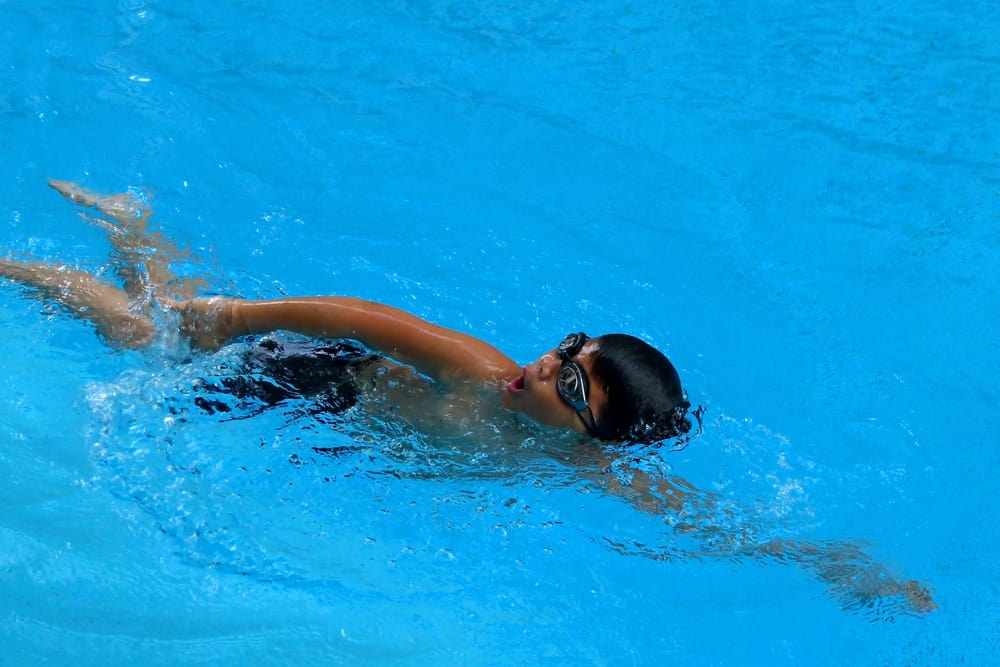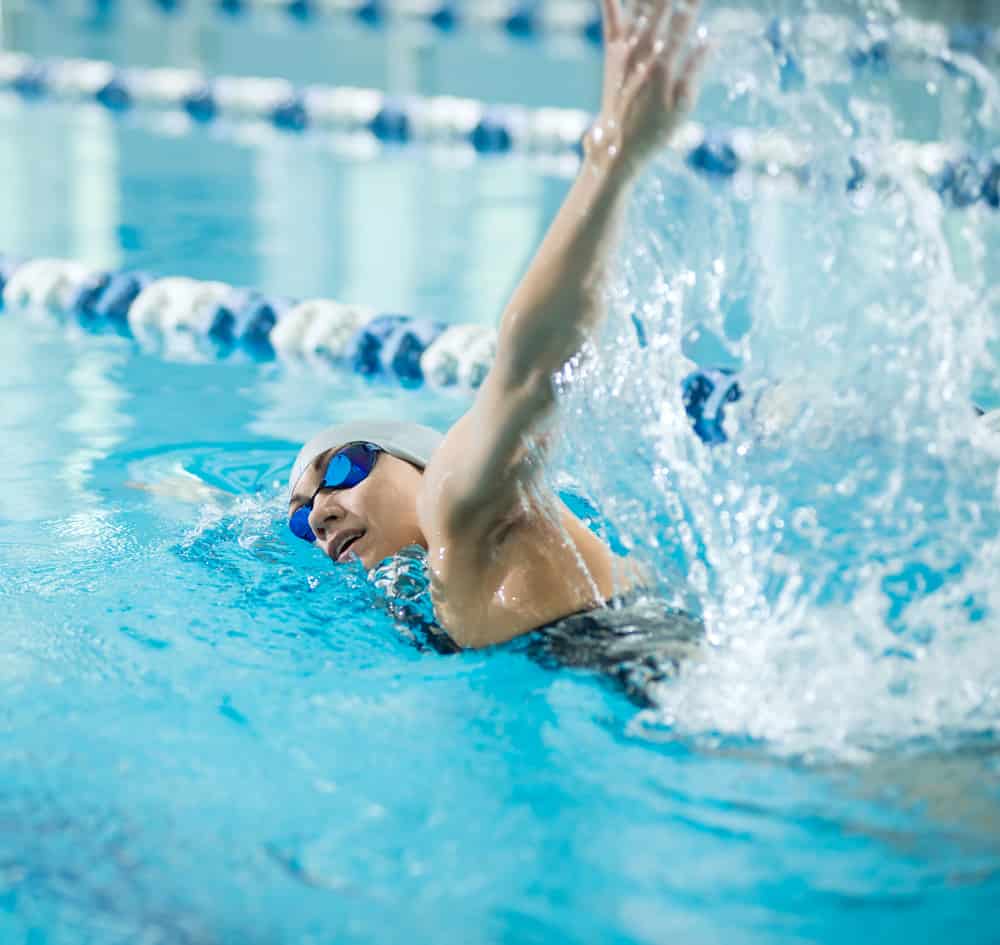The front crawl is considered the best stroke because it’s the most efficient way to move through the water. It’s also one of the most natural swimming strokes, making it easy to learn and master.
The front crawl gets its name because you swim on your stomach, with your arms and legs moving together in a coordinated flutter kick. The stroke is also known as the freestyle because it is used in most competitive swimming events.

There are a few key things that make the front crawl so efficient.
- First, the flutter kick provides a lot of power and helps to propel you through the water.
- Second, arm movement is very efficient, with your arms working together with your legs to move you forward.
- Finally, the front crawl is a relatively low-impact stroke. That means it’s easy on your joints and muscles, making it a good choice if you want to avoid injuries.
So, is the front crawl the best stroke? It’s undoubtedly one of the most efficient and effective strokes, and it’s an excellent choice for both competitive and recreational swimmers. Give it a try next time you’re in the pool.
Table of Contents
How to do a Front crawl
The front crawl stroke is all about efficiency. You want to move through the water with as little resistance as possible. You must keep your body as straight as possible and kick your legs in a flutter-kick motion.

Your arms should move alternately, with one arm permanently extended forward and the other recovering back to your side. As your arms move through the water, they should create a slight “S” shape in the water.
When swimming front crawl, you should breathe every 3-5 strokes. This will help keep you oxygenated and help you swim for extended periods. If you are starting, try swimming with a kickboard. This will help you focus on your stroke and technique without worrying about keeping yourself afloat.
Once the front crawl is down, you can experiment with different variations. You can try swimming with a board, using paddles, or swimming with a pull buoy between your legs.
So there you have it! Now you know how to do the front crawl stroke. Get out there and start swimming.
The difference between breaststroke and front crawl
Swimming strokes can be divided into two main categories: breaststroke and front crawl. Breaststroke is a slower stroke with more arm movement, while front crawl is a faster stroke with more leg movement.

Let’s take a closer look at the key differences between these two swimming strokes.
- Breaststroke is a slower stroke with more arm movement, while front crawl is a faster stroke with more leg movement.
- Breaststroke is considered a more demanding stroke to master, while front crawl is deemed to be more beginner-friendly.
- Breaststroke uses a different breathing pattern than front crawl, making it more difficult to sustain for long periods.
- Breaststroke is better for shorter distances, while front crawl is better for longer distances.
- Breaststroke puts more strain on the upper body, while front crawl puts more pressure on the lower body.
Now that you know the critical differences between breaststroke and front crawl, you can decide which swimming stroke is right for you. If you’re starting, a front crawl may be the better option. But if you’re looking for a challenge, breaststroke may be the way to go.
What is The fastest way to swim?
Swimming is an excellent exercise for your whole body, providing a low-impact cardio workout that can help you burn calories and tone muscles. It’s also a great way to stay cool in the summer heat! But if you’re looking to swim faster, specific strokes you can focus on will help you pick up the pace.

The freestyle stroke is generally the fastest way to swim, as it utilizes an efficient flutter kick and an efficient arm pull. If you want to swim even faster, try using a dolphin kick instead of a flutter kick – this will help you propel yourself through the water even quicker!
Another fast swimming stroke is the breaststroke. While it may not be as fast as the freestyle, it is an excellent option if you’re looking for a more gentle workout. The breaststroke also uses an efficient flutter kick but with a slightly different arm motion that helps to move you through the water.
The butterfly stroke is another fast swimming stroke, but it is also one of the most difficult to master. It utilizes a powerful dolphin kick and requires a lot of coordination between your arms and legs. If you can perfect the butterfly stroke, you’ll be swimming laps around the competition!
If you’re looking to swim fast, focus on mastering one of these three strokes. With practice, you’ll be swimming laps around the pool in no time.
Which is the most complex swimming stroke?
Four main strokes are used in competitive swimming: freestyle, backstroke, breaststroke, and butterfly. Of these, the butterfly is considered the most difficult.

The butterfly stroke is so named because it resembles a butterfly’s wings in motion. It is a hybrid of the breaststroke and the freestyle, incorporating elements of both. To perform the butterfly stroke, swimmers must coordinate their arms and legs in a simultaneous, synchronized motion. This can be difficult to master and takes much practice and coordination.
The butterfly stroke is also the fastest of the four main strokes, making it the choice for competitive swimmers looking to swim at top speeds.
If you’re starting, swimming laps with a basic freestyle stroke is a great way to get in some cardio and build up your endurance. As you become more comfortable and confident in the water, you can experiment with different strokes, including the butterfly. You may have a hidden talent for swimming.
